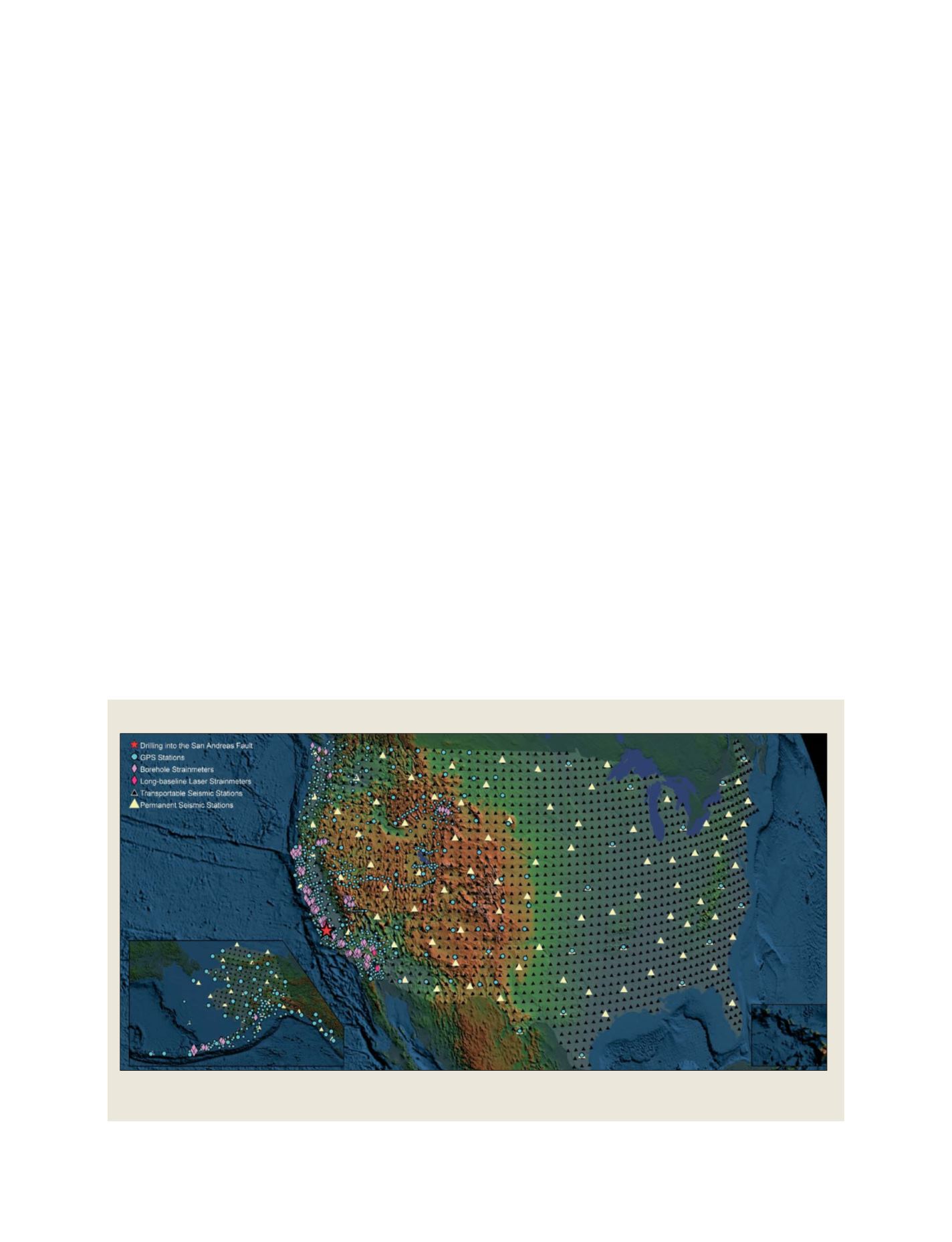

[
] 90
Society needs ‘ecosystem forecasts’ in the same way it depends
on weather forecasts. For example, viruses like Hantavirus, carried
by mice, infect humans through exposure to rodent droppings.
Ecological observing systems can help track where and when mice
carrying this virus may appear and put humans at risk.
The quality of ecosystem forecasts will improve with an under-
standing of how the Earth system operates. Resource managers
make decisions that affect ecosystems for decades. Good forecasts
of the consequences of these choices will lead to better-informed
management of our coasts, rivers and lakes, forests, and agricul-
tural lands.
NSF-supported land-based observatories also measure environ-
mental parameters near areas prone to earthquakes and volcanic
eruptions. For example, the US EarthScope, a vast network of
geologic sensors, tracks the motions of Earth’s surface, records
seismic waves, and provides scientists with a way to recover rock
samples from deep beneath the Earth where earthquakes originate.
Last year, EarthScope instruments installed on the flanks of the
Augustine Volcano in Alaska revealed a steady increase in earth-
quakes beneath the volcano. EarthScope recorded Augustine’s
eventual eruption, as well as an ash plume that extended more
than 40,000 feet high, forcing jets to alter their routes as they trav-
elled to and from Asia. Only with permanent observing stations,
like EarthScope, can scientists monitor a volcano’s ‘breathing’ as
it shrinks and swells with the movement of magma inside.
Through a related system, NSF’s Network for Earthquake Engineering
Simulation (NEES), engineers and scientists are performing research
on the effects of earthquakes on people, soils, buildings, and infra-
structure like bridges. NEES facilities are a network through which
real-time simulations of earthquakes can be conducted and their conse-
quences to society observed.
NSF-supported environmental observing systems
for the seas
While NEON, EarthScope and NEES are land-based
projects; NSF’s Ocean Observatories Initiative (OOI)
will gather continuous observations from near-shore
and remote areas of the seas, providing the basis for a
new understanding of the ocean. OOI will allow scien-
tists to probe the depths, and give them access to
long-term measurements of the ocean and the seafloor.
High-tech ocean observatories supported by NSF,
located in places like the depths of California’s
Monterey Bay, will give insight into issues such as how
nutrients like nitrogen make their way from near-shore
areas to the deep-sea and back again.
A network of global, regional, and coastal ocean
observatories, OOI will be linked to the internet via
seafloor cables and satellites. Through OOI, marine
scientists will address questions such as: How does
climate change impact ocean ecosystems, including
declining fisheries and increasing harmful algal
blooms? And how can ocean-bottom seismic readings
give us early warnings of the undersea earthquakes
that precede tsunamis?
NSF-supported environmental observing systems
for the polar regions
Global warming is having a speedy and significant
impact on the polar regions. Arctic sea ice cover reached
a record minimum in September, 2007, and ice sheets
and glaciers are melting with great speed. Waters
flowing through melt channels, or moulins, in
The US EarthScope Network
EarthScope is a vast network of geologic sensors that track the motions of Earth’s surface, record seismic waves, and provide scientists with a way to
recover rock samples from deep beneath the Earth
Source: EarthScope
GEOSS C
OMPONENTS
– O
BSERVING
S
YSTEMS
















